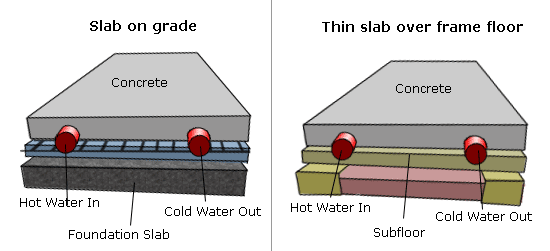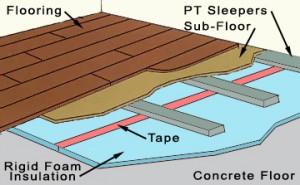Central Heating Leak In Concrete Floor

This is because concrete is somewhat porous and slowing wicks moisture up to the surface so it can evaporate.
Central heating leak in concrete floor. The floor is in the corner of a cloakroom and near to central heating pipes. Since the pipes of radiant heating systems are embedded in concrete slabs to transfer the heat from the water to the rest of the room you can often tell there s a leak by looking for damage to the flooring over that slab. Acoustic microphone listens for the noise of the leak escaping from the heating pipe. The kitchen radiator is just through the wall from the boiler and the pipes go up from the kitchen to under the floorboards upstairs.
Our house has concrete floors downstairs and central heating was put in before we moved in. When the floor is lifted it does not appear to be soaking wet. The radiators have been located in a way that means there are minimal pipes around the house. It is common practice for under floor heating systems and or heating pipes to be buried within the concrete screed slab.
Then if thats the case i would be tempted to feed all ground floor rads from ceiling down over. The most common reason is that if the pipes are not properly protected ie if the pipe work is copper then the acidic nature of the concrete of a period of time will slowly start to eat away and corrode the copper pipe and or fittings. Once the heating leak has been located our engineers all experienced plumbers can carry out a same day repair. Get somebody in to have a look if the tank is continually dripping you may haved a leak under the floor.
Why do leaks occur. This was a very common scenario for trace and access experts. When the floor is up it is simply evaporating. Maybe that the main feeds to the ground floor can be cut and capped to confirm a problem.
A plumber had suggested a leak under the floor as the most likely reason. Once the leak has been repaired the system will be re tested to ensure the repair is sound and to check for further leaks.


















